How To Write A Book
How to write a book
It’s a question that has been asked by writers and non-writers alike for years. And, while there is no one-size-fits-all answer to how to write a book, there are some basics that every author should know. So, whether you’re just beginning your writing journey or you’ve been at it for a while and could use a refresher, this post is for you. Let’s get started!
- Why write a book?
- What goes into a book?
- How to understand the structure of a book?
- What are the different genres of a book?
- What are the different kinds of narratives?
- How to start writing your book?
- How to choose a topic for your book?
- How to choose a theme for your book?
- How to outline your book’s contents?
- How to create your writing schedule?
- How to set your writing goals?
- How to find your ideal writing space?
- What are the book-writing softwares you can use?
- How to get started on your first chapter?
- How to dictate and transcribe your book?
- How to write your first draft?
- How to edit and polish your work?
- How to fight writer’s block?
- How to design your book?
- How to publish your book?
- What comes after publishing your book?
- What makes a bestseller?
- How to handle criticism and negative feedback?
- What follows a bestseller?
- How to write a successful book series?
Why write a book?
Writing a book is one of the most challenging and rewarding things you will ever do. It’s a process that will test your patience, push your mental and emotional limits, and force you to confront your deepest fears and doubts. But it’s also an incredibly enriching experience that can change your life in ways you never imagined.
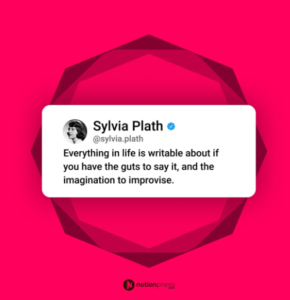
So why write a book? There are many reasons to write a book, but ultimately it comes down to two things: knowing why you’re writing and having the passion to see it through. If you can find those two things, then you’re well on your way to writing a book that will change your life – and maybe even the world.
What goes into a book?
Different types of books have different contents. A novel, for example, typically contains an intricate plot with multiple characters, whereas a non-fiction book might focus on a specific topic and provide facts and information about that subject.

A good book is like a magic carpet ride. It transports you to another world, where you can explore new ideas and meet fascinating people. Even though you may not be able to visit the places in the book, or meet the characters in person, a good book can still take you on a journey that is both enjoyable and enlightening. A good book is also a compelling read, one that draws you in and keeps you turning the pages. It is a book that you can’t put down, even though you may want to savor every word.
What makes a good book is ultimately up to the reader, but certain elements can make any book a great read. Whether it’s an epic fantasy or a heart-wrenching drama, a good book will stay with you long after you’ve finished reading.
How to understand the structure of your book?
Understanding the structure of fiction books
Most fiction books can be divided into three acts: the set-up, the conflict, and the resolution. The set-up is where the reader is introduced to the characters and the setting of a book. The conflict is the story’s main event, where the characters are put to the test and must overcome challenges. The resolution is where the challenges are resolved and the story comes to an end. You can find this structure in many popular novels, as well as in plays and movies.

It is a helpful way to think about your writing about the three-act structure because it ensures that there is a clear beginning, middle, and end. However, it is important to note that not every story follows this structure perfectly. Some stories may have more than three acts, or they may not have a clear resolution. But for many stories, the three-act structure is a helpful way so you can creatively think about how the story should be told.
Many famous books follow this structure, including J.K. Rowling’s Harry Potter series, Suzanne Collins’s The Hunger Games trilogy, and George R.R. Martin’s A Song of Ice and Fire series.
Similarly, Leo Tolstoy’s War and Peace can be seen as three separate but interconnected stories, each with its arc. The three-act structure is a versatile tool that can be used to create a variety of different stories, making it one of the most popular techniques of storytelling today.
Understanding the structure of a nonfiction book
While the three-act structure is widely employed in fiction, plays, films, and even creative nonfiction, it is important to note that if you’re writing a nonfiction book, your book might not necessarily be in this structure despite containing all the elements of a beginning, middle, and end. Here, the main idea or event, or individual featured in your book informs the setup and the first act where the pressing issues are introduced to the readers. You discuss the central issues elaborately in the middle section and the conclusions or solutions are presented at the end.
Generally, there are two structures of writing a nonfiction book: the circular structure and the parallel structure. In a circular structure, you start narrating the story with the climactic event and retrace your steps back to what was the starting point and progression of events with detailed accounts of the people involved. On the other hand, in the case of a parallel structure you are following multiple storylines simultaneously.
This is effective if you’re writing about multiple individuals or organizations. Interesting nonfiction books tend to combine different forms of structure to enhance storytelling and create a compelling read.
What are the different genres of a book?
Genres in fiction books
There are many different genres of books, both fiction and non-fiction. Some of the most popular genres of fiction include romance, mystery, thriller, and science fiction. Romance novels often focus on stories of love and heartbreak, while mystery novels typically involve solving a crime or uncovering a hidden secret. Thrillers are usually fast-paced and suspenseful, while science fiction often explores futuristic worlds or concepts.
Genres in non-fiction books
As for non-fiction genres, common genres include history, biography, self-help, and cookbooks. History books recount past events, while biographies tell the story of a person’s life. Self-help books offer advice on topics like relationships or career development, while cookbooks provide recipes and step-by-step instructions for preparing meals. There are many different genres of books to choose from, so there is something to suit every reader’s taste.
Conventions of different genres
Each genre owns specific conventions, which are the expectations that readers have for a book in that genre. For example, romance novels typically have a strong focus on relationships and emotion, while crime novels tend to focus on suspense and mystery.
Understanding these conventions is essential for writers who want to succeed in a particular genre. In addition, each genre has its unique themes and subgenres. The initial idea of the writers and how they want to treat it in their books ultimately determines what genre the books will fall into.
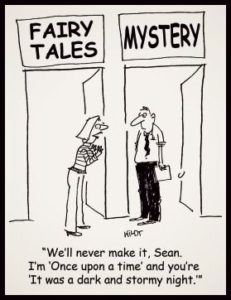
Famous genre writers include Stephen King (horror and thrillers), JRR Tolkein (fantasy fiction), Agatha Christie (mystery), Nora Ephron (romantic comedy), and Syd Field (Screenplay Writing). Writers need to know about the inherent expectations of a genre to effectively write for the same. At the same time, they must also be careful not to rely too heavily on clichés. Otherwise, their work may come across as formulaic or unoriginal.
Ultimately, it is up to the writer to strike the right balance to produce a compelling and enjoyable book that fits within the genre.
What are the different kinds of narratives?
Books are often lauded for their ability to transport readers to different worlds, but it is the narratives within those books that truly bring those worlds to life. Without a well-crafted story, a book is little more than a collection of characters and settings. There are many different types of narratives that authors can use to bring their stories to life, and each has its unique benefits and challenges. You need to know which narrative is suited best for your story.
One type of narrative is the first-person narrative. This is when the story is told by a character in the book, and it is usually written in the form of a journal or diary. An example of this would be The Catcher in the Rye by J.D. Salinger.
When it comes to nonfiction, Viktor Frankl’s Man’s Search for Meaning is a renowned example of first-person narrative where the writer narrates the unfolding events in the Concentration camp and shares his insights on human psychology.
Another type of narrative is the third-person limited narrative. This is when the story is told by an omniscient narrator, but the focus is only on one character. The reader only knows what that character is thinking and feeling. An example of this would be The Great Gatsby by F. Scott Fitzgerald. Biographies can be classified under this type of narrative in nonfiction.
The last type of narrative is the third-person omniscient narrative. This is when the story is told by an omniscient narrator who knows everything about all characters. The reader gets to see the thoughts and feelings of all the characters. An example of this would be War and Peace by Leo Tolstoy. The third-person omniscient narrative is majorly found in nonfiction books where the writer illuminates and offers insights on various events and individuals about the central topic. Renowned nonfiction books including Sapiens and A Brief History of Time fall under this category.
Each type of narrative has its benefits and drawbacks, and it is up to the writer to decide which one will work best for their story. By understanding the different types of narratives, writers can more effectively craft their stories and create an engaging reading experience for their readers.
How to start writing a book?
So, you’ve always wanted to write a book. You have an idea for a story brewing in your head, and you’re finally ready to get started. But where do you begin when you want to write a book? Writing a book can seem like a daunting task, but it doesn’t have to be. Here are a few tips to get you started on your journey to becoming an author.
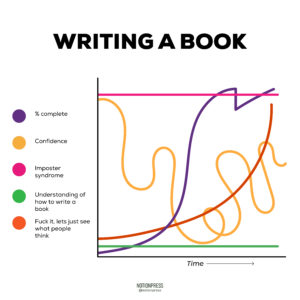
The first step is to just start writing. It doesn’t matter if what you’re writing is good or bad, just getting the words down on paper (or screen) is the important part.
Another important tip is planning how to write a book. Before you can start writing, map out your story. Know what happens in each chapter of your book, or at least have a general idea. Plan it one chapter at a time. This will help stay on track as you’re writing your book and prevent you from getting stranded. Of course, your story may change as you’re writing it, and that’s okay. Just having a basic outline of your book will help keep you focused.
Finally, don’t be afraid to ask for help. If you’re struggling with getting started on your book or keeping going, reach out to a friend who likes to read. Talk to them about your ideas and get some feedback. This can help you with refreshing perspectives and staying motivated as you commence the writing process.
Joining a writers’ group or finding an online community of authors who can offer support and advice will help you a great deal. Taking the first steps toward writing a book can seem intimidating, but it doesn’t have to be overwhelming. Just start writing and see where the story takes you.
How to choose a topic for your book?
The most difficult part of writing a book is knowing what your book is about. The topic will dictate the theme and genre, so it’s important to choose wisely. If you’re struggling to come up with a topic, try brainstorming a list of potential ideas.
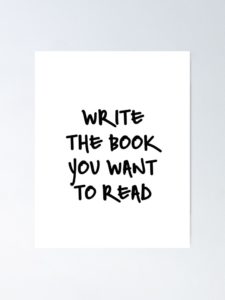
Once you have a few potential book ideas, think about which one you’re most passionate about. You need to know your audience when choosing a topic. What type of book do they usually enjoy reading? What are they looking for in a book? Answering these relevant questions will help you get a comprehensive idea of what to write.
How to choose a theme for your book?
Once you have a general idea of what you want to write about, it’s time to start developing the theme. The theme is the central message or idea that you want to communicate through your story. It’s what sets your book apart from other books in the same genre.
For example, if you are going to write a book about romance, the theme might be “love is turbulent”. If you are writing a mystery, the theme might be “justice always prevails in the end.” Keep in mind that the theme should be expressed subtly throughout the entire book and not just in its climax or resolution. With careful planning and execution, choosing a topic and theme for your book can be an exciting experience.
How to outline your book’s contents?
Before you can start writing your book, you need to have a clear idea of what your book is going to be about. This is where outlining comes in. Outlining is the process of creating a roadmap for your book, outlining its main themes, characters, and plot points. It’s an essential step in the writing process, as it helps to keep you focused.
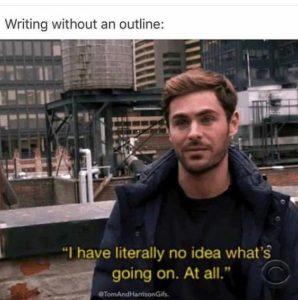
There are a few different ways to go about outlining your book’s contents. You can start by brainstorming all of the different elements of book writing that you want to include, then organize them into a more coherent structure. Alternatively, you can start with a basic idea of your book’s plot and build from there. Whichever approach you take, outlining will help you to create a better, more cohesive book.
Steps involved in outlining a book
A good outline is a key to a successful book. It’s how you take all of your research and notes and turn them into a coherent narrative. But how do you go about creating an outline? Here are the steps involved:
First, research your topic inside and out. This means reading everything you can get your hands on, taking notes, and asking questions. The more you know about your subject, the easier it will be to write about it.
Next, start organizing your research into specific topics or themes. Once you have a general idea of what you want to cover, you can start putting together an outline.
Begin by brainstorming a list of ideas for each chapter. Then, organize those ideas into a logical order. Remember, the goal will be to create a roadmap for yourself so that you know where you’re going and don’t get sidetracked along the way. Finally, once you have a complete outline, it’s time to start writing your book. Keep in mind that the outline is only meant to be a guide – feel free to deviate from it if necessary. The most important thing is getting started and letting the story flow. With any luck, before long you’ll have a finished manuscript in your hands!
How to create your writing schedule?
Any author will tell you that writing a book is no small feat. It requires planning, dedication, and a lot of hard work. A crucial aspect of writing a book is staying on schedule. A writing schedule is to help you stay organized and make efficient use of your time as you strive to finish your book.
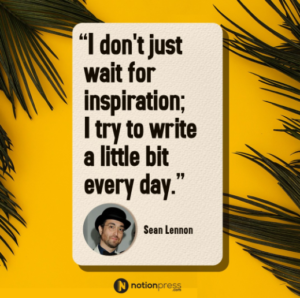
When creating a writing schedule, it’s important to be realistic. Estimate how much time you can realistically dedicate to writing each day, and then factor in additional time for planning and editing. Once you have a general idea of how much time you can reasonably devote to writing, you can start planning out your schedule.
How to set your writing goals?
One helpful way to stay on track can be to set daily or weekly writing goals. Deciding on your ideal word count for the day is a crucial step in planning your schedule. And, remember to take it one day at a time. For example, you might decide that you want to write 3,000 words per week. Once you have your goal of word count, break it down into smaller daily targets. If you’re aiming for 3,000 words per week, that means you’ll need to write approximately 600 words per day.
Insights from authors
In his famous book on writing, renowned author and painter Henry Miller lists down his eleven sacred commandments for writing. Here are a few pointers from Miller’s commandments that can be useful to writers as they sit down to plan their ideal goals and extend a commitment.
- Write first and always. Painting, music, friends, cinema, all these come afterward.
- Don’t be nervous. Work calmly, joyously, recklessly on whatever is in hand.
- Keep human! See people, go places, drink if you feel like it.
- Forget the books you want to write. Think only of the book you are writing.
Creating a writing schedule can seem like an overwhelming task, but it’s well worth the effort. By taking the time to plan out your writing goals and timetable, you’ll be setting yourself up for success. Stay organized, dedicated, and flexible, and you’ll be sure to finish your book in no time!
How to find your ideal writing space?
Every writer needs a writing space – a place where they can go to concentrate and focus on their work. For some, this is a corner of their bedroom or a spot at the kitchen table. Others need to have a dedicated room where they can close the door and shut out the rest of the world. No matter what your need for space looks like, there are a few things to keep in mind when you’re trying to find your writing space.
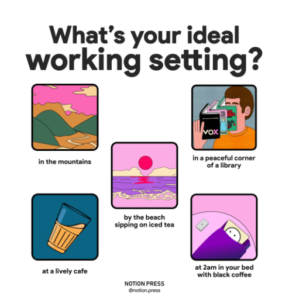
First, consider your need for concentration if you’re writing dedicatedly. If you have difficulty staying on task, you’ll need a space with minimal distractions when you are writing your book. This means finding a place where you won’t be interrupted by family, pets, or other aspects of daily life.
It might mean setting up some type of physical barrier – such as a curtain or screen – between you and the rest of the room. Alternatively, it might mean finding a space that’s already secluded, like a study or library. Second, think about your need for comfort and inspiration. When you’re concentrating on your work, you might not notice your surroundings, but it’s important to be in a space that makes you feel good. This might mean having plenty of natural light, fresh air, and comfortable furniture. Or it might mean having personal belongings – photos, books, mementos – around you to remind you why you’re writing in the first place.
Finally, don’t forget about practical considerations like noise level and temperature. If you prefer complete silence when you write, you’ll need to find a space that’s quiet enough to suit your needs. And if you tend to get cold easily, you’ll want to make sure your writing space is compatible. By taking all these factors into account, you can find the perfect writing space that boosts both your focus and creativity.
What are the book writing softwares you can use?
There are various useful book-writing software programs available to writers today. These programs can assist with numerous aspects from organizing ideas to avoiding distractions and collaborating with co-authors.
Some popular book-writing software programs you need to know include Scrivener, yWriter, and Authoroos. Each of these programs has its own unique set of features, so it’s important to choose the one that best suits your needs. Scrivener, for example, is great for organizing complex projects, while yWriter is ideal for avoiding distractions and keeping your writing on track. Authoroos is perfect for collaborating with co-authors, as it allows you to share files and work on chapters together in real-time. No matter what your book-writing needs are, there’s sure to be a software program that can help.

Google Docs is a free and effective tool available to writers. It is widely used and facilitates active collaboration. The suggestion mode enables receiving feedback and exchanging comments on the work in progress. Grammarly is a simple, yet powerful tool that can help to improve your writing. It can be used for organizing thoughts, correcting errors, and editing your work. In addition, Grammarly can help you to learn more about grammar and style. By using this tool, you can become a more refined writer. As you become increasingly familiar with Grammarly, you will find that it can help you to handle complex writing tasks. In short, Grammarly is an essential tool for any writer. These tools can also help you to make note of your writing progress and other aspects such as word count.
Which app can help you avoid distractions?
Multiple apps are available for writers to elude distractions and channel their energy into writing. Anyone who’s ever tried to focus on work knows how difficult it can be to avoid distractions. Whether it’s the lure of social media, the siren song of Netflix, or just a sudden urge to tidy up the house, there always seems to be something pulling us away from our task at hand.
The Freedom app is designed to help users conquer distractions and improve concentration. By blocking access to certain websites and apps, Freedom allows users to create a distraction-free environment in which they can get their work done.
In addition, Freedom can also be used to schedule certain types of content so that it can only be accessed during specific times.
For example, users can block social media during work hours and then allow themselves access during their lunch break.
By giving users more control over when and how they access content, Freedom helps them to achieve a better balance between work and leisure. As a result, the app has become a valuable tool for anyone who struggles with concentration and avoiding distractions.
Getting started on the first chapter of the book
The first chapter of any book is crucial in setting the stage for the story that is about to unfold. It needs to be interesting and compelling enough to make the reader want to keep going, while also providing enough information about the world and its inhabitants to ensure that they understand what is happening.
In some ways, it can be an extremely difficult chapter to write.
However, there are a few tips that can help you get started on crafting a successful first chapter. One important thing to remember is that the introduction to the world should be gradual. You don’t want to dump too much information on the reader all at once, as it can be overwhelming. Instead, introduce new concepts and characters slowly, providing just enough information to whet their appetite without baffling them.
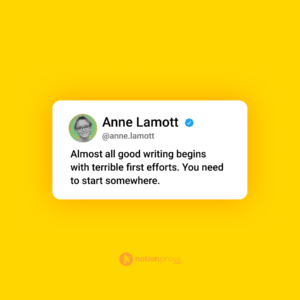
It’s also important to create a strong sense of setup in the first chapter of your book. This means establishing the location, period, and other relevant details that will provide context for the story. The goal is to make sure that readers have a clear understanding of what they are reading so that they can fully engage with the story.
With these things in mind, you can start writing the first chapter of your book with confidence. You need to keep these tips in mind as you introduce your readers to the wonderful world you’ve created.
How to dictate and transcribe your book?
Different writers have different methods. Some prefer taking notes and writing it all down while others find that they are more adept at speaking out their book. The latter kind of writer works mostly with audio notes and transcribed drafts. Voice apps including Memos and Audacity are widely used by writers to record their rough drafts.
In today’s fast-paced world, many writers find themselves transcribing their voice notes to keep up with their thoughts. While this can be an efficient way to get ideas down on paper, it can also be frustrating to edit and revise later on. This is where popular transcription services come in. Transcribing voice notes into text can help writers save time and stay organized. In addition, transcription services can also be used to create transcripts of interviews or recordings.
This can be a valuable tool for writers who want to make sure they capture all the details of a particular conversation. Whether you’re transcribing your voice notes or someone else’s, transcription services can help you stay on top of your writing.
How to write your first draft?
Writing the first draft can be an intimidating prospect, but it doesn’t have to be. A helpful step is writing for yourself, without worrying about what other people will think. Just get your ideas down on paper in an unfiltered way – worry about editing and polishing them later.
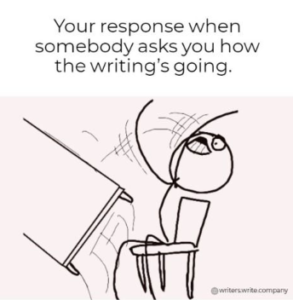
There are a few basic steps to writing the first draft of your book:
- Collect your material: This can include notes, ideas, images, and anything else that might be useful.
- Write a basic outline of your piece: This will help you organize your thoughts and make sure you don’t forget anything important.
- Start writing: Don’t worry about making mistakes or whether every sentence is perfect – just keep going until you’ve got something down.
- Take a break: Once you’re done, put the draft away for a while and come back to it later with fresh eyes.
Following these steps should help you write a strong first draft of your piece. Remember that the goal is just to get your ideas down on paper as you start on the first draft – the rest can be fixed later. So relax and enjoy the process!
How to edit and polish your work?
Many people believe that editing is simply correcting spelling and grammar mistakes, but there is so much more to editing than that. Editing is a crucial step. It is the time when you take a closer look at your work, identifying areas that need improvement and making sure that your writing is clear and concise.
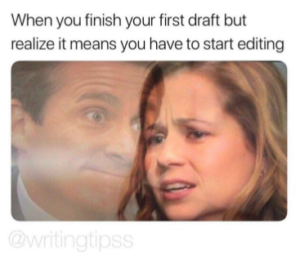
The Steps for Editing your book
There are several steps involved in editing, and each one is essential to the process. The first step involves reading your work aloud. This may seem odd, but reading aloud can help you to catch errors that you may have missed when reading silently. It can also help you identify awkward phrasing or choppy sentences.
The second step involves the revision of content. Take a close look at each sentence and ask yourself if it adds anything to the overall story. If not, delete it. Also, you need to consider whether there are any sections of the story that are unclear or could be fleshed out more.
The third step involves rewriting any awkward or choppy sentences. Even if a sentence is technically correct, it may not sound natural when read aloud. When you are rewriting, it can refine your writing and storytelling.
The fourth step is the revision of style. This involves making sure that your writing sounds distinct and unique. Take a look at your word choice and sentence structure. Are you using overly complicated words or sentence constructions? Simplify where necessary so that your writing sounds clear and straightforward.
Finally, the fifth step involves proofreading for any remaining errors. This includes both typos and grammatical errors. By taking the time to edit, rewrite, revise, and refine your work, you’ll be sure to produce a finished book that you can be proud of.
Several famous writers in history have had strong opinions on the editing process. For many, editing is an essential part of improving their work and perfecting their craft. “The first draft of anything is sh*t,” famously said Ernest Hemingway. In other words, editing is necessary to produce good writing. Hemingway believed that editing was so important that he created his editing method, which he called “killing your darlings.” This involved cutting out any unnecessary or excessive elements from his stories to make them tighter and more focused. Other writers have similar views on editing.
Truman Capote once said, “I believe more in the scissors than I do in the pencil.” He believed that editing was essential for storytelling and that it was often more effective to remove excess material than to try to add new elements. It’s clear that editing is an important part of the writing process for many famous writers, and it can be a helpful tool for improving your work.
How to fight writer’s block?
Anyone who has ever tried to write something – whether it be a novel, an essay, or even just a college paper – has probably experienced writer’s block at some point. This feeling of being stuck, of not knowing what to write next, and the fear that you might never finish your book can be frustrating and discouraging. But the good news is that there are ways to overcome writer’s block. Below are some tips for avoiding and overcoming this common problem.
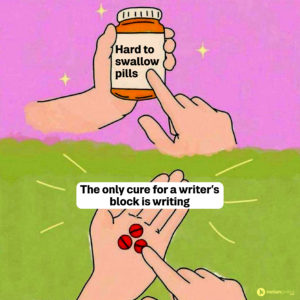
One way to avoid writer’s block is to be prepared. This means having a clear idea of what you want to write before you start. This could mean brainstorming ideas, doing research, or creating an outline. This way, when you sit down to write, you’ll have a road map to follow and won’t get stuck wondering what comes next.
If you find yourself experiencing writer’s block despite being prepared, don’t despair. There are still things you can do. One option involves taking a break from writing and coming back to it later with fresh eyes. Sometimes all it takes is some time away from your work to see it in a new light and get the creative juices flowing again.
Another possibility is writing in a different format or style than what you’re used to. If you usually write fiction, try writing non-fiction, or vice versa. Or if you typically write long-form pieces, try writing something shorter, like a poem or a blog post. Experimenting with different mediums can jump-start your creativity and help you get over that pesky case of writer’s block.
Insights from authors
Famous writers have a lot to say about avoiding writer’s block. Elbert Hubbard said, “Do not wait; the time will never be ‘just right.’ Start where you stand, and work with whatever tools you may have at your command, and better tools will be found as you go along.” This quote is often cited when it comes to avoiding writer’s block, as it stresses the importance of starting somewhere instead of waiting for the perfect opportunity.
Nobel Laureate Toni Morrison advises writers to be patient with themselves, saying that blocks are “a momentary leveling off, not an ending.” By viewing blocks as an inevitable step rather than an insurmountable obstacle, you can keep moving forward even when it feels like you’re stuck and finish your book.
How to design your book?
When you are choosing a book cover, it is important to consider both the brief and the design’s thematic relevance. The brief should be clear and concise, providing specific instructions on what the cover should include. The cover should also be interesting and visually appealing, with a design that reflects the theme.
In addition to these considerations, it is also important to ensure that the cover reflects the genre. For example, a book about social media would likely have a different cover than a book about history. By taking all of these factors into account, you can ensure that your book cover conveys both the brief and the theme of your book.
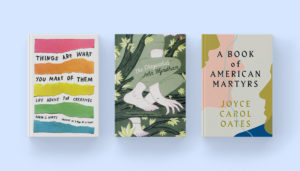
What are the tools you can use to design your book?
There are numerous effective tools that writers can use to design their books. Canva is a primary tool that offers a range of templates for covers, pages, and illustrations. Another is Adobe Photoshop, which can be used to create custom designs. For those who want more control over the layout and design of their book, InDesign is a professional-grade software program that offers a wide range of features.
However, it is important to remember that the most important tool for any writer is their creative imagination. With a little hard work and dedication, any writer can design a book that is both aesthetic and compelling.
How to publish your book?
It is widely said that the hardest part about writing a book is getting it published. But with a little elbow grease and some know-how, getting your manuscript into the hands of readers everywhere doesn’t have to be a pipe dream.
What is traditional publishing?
There are two ways to traditionally publish your book: through a publishing house or via an agent. If you go the publishing house route, you submit your manuscript directly to the publisher, who will then decide whether or not to publish it.
Similarly for getting an agent you first need to find an agent who represents authors in your genre and who likes your work earnestly to want to represent you and sell your book to a publishing house on your behalf.
Other routes to publishing include submitting to literary magazines or anthologies or winning contests sponsored by those magazines or anthologies—but these generally work if you’re already well-connected amongst other literary personalities.
What is self-publishing?
Self-publishing has become increasingly popular in recent years as technology has made it easier and less expensive than ever before. Notion Press offers self-publishing services to authors and strives to democratize the sphere of publishing. Every story finds its voice with Notion Press. Aspiring authors can avail of numerous services in Notion Press including formatting their book, designing covers, distribution, and sales. In self-publishing, you retain complete creative control of your work and get to decide when (and how) it goes out into the world. You also keep all of the royalties (meaning the money made from each sale) rather than having to split them with a publisher. Of course, self-publishing also means shouldering all costs and responsibilities of publication yourself.
No matter what route you decide to take, remember that writing a book is ultimately a creative process, so feel free to experiment until you find the method of publication that feels right for you and your work. And most importantly: keep writing!
How to market your book?
Marketing your book can be a daunting task, but it’s important to remember that marketing is simply about finding your target audience and promoting your book to them in a way that will generate interest. The first step is identifying your target audience. Who are the readers that are most likely to be interested in your book?
Once you’ve identified your target audience, you need to figure out how to reach them. This can be done through online marketing, social media, word-of-mouth, or traditional marketing channels such as print advertising or media appearances. Once you’ve figured out how to reach your target audience, the next step involves promoting your book in a way that will create intrigue among the readers. This might involve creating an attention-grabbing cover, writing an exciting synopsis, or offering a free sample chapter.
Whatever marketing approach you choose, the important thing is to be creative and think outside the box. With a little effort, you can successfully market your book and find the readers that it was meant for.
What comes after publishing your book?
After a book is published, several post-publishing steps can help ensure its success. You have to coordinate book launch events and persist in marketing the book. This can generate excitement and word-of-mouth buzz, leading to increased sales. In addition, it’s important to obtain reviews from influential reviewers and bloggers. These reviews can help build credibility and interest in the book.
Finally, post-publication success also depends on effective and active promotion. This can include everything from online ads to personal appearances by the author. By taking these steps, authors can give their books the best possible chance for success.
What makes a bestseller?
This is a question that has been debated by book lovers for centuries. There is no easy answer, but there are certain factors that tend to make a book more successful than others. First and foremost, a bestseller is usually a well-written story that resonates with readers. It may be a sweeping epic or an intimate character study, but it should have something special that speaks to the human experience.

In addition, bestsellers often have strong marketing campaigns behind them. While there is no guarantee that any one book will become a bestseller, these are a few elements that tend to make a book more successful than others. By following the above-elucidated steps in this article, you can ensure that you create a compelling work that enjoys greater chances of making it a bestseller.
Handling criticism and negative feedback
For any writer, feedback is an essential part of the creative process. Whether it comes as a colleague’s feedback on a work in progress or a reader’s response to a published piece, feedback can help us to sharpen our ideas and hone our craft. However, it’s not always easy to take criticism, particularly when it feels like our work is being attacked.
In moments like these, it’s important to remember that feedback, even negative feedback, can be invaluable if we’re open to it. After all, constructive criticism is intended to help us improve our writing, not tear it down. If we’re able to listen with an open mind, we may just find that the criticism we so dread can be the key to unlocking new levels of creativity.
What follows a bestseller?
Now when you have a bestseller in your hands, what next? Here is where the concept of book series comes into play. How does a bestseller become a successful book series? For many authors, it’s the Holy Grail: write a great book, watch it hit the bestseller list, and then watch as it’s turned into a franchise that runs for years. But it’s not always that simple. While there are certainly bestsellers that have been successfully turned into book franchises, there are numerous examples of bestsellers that have failed to make the transition.
What are the factors determining a successful book series?
There are a few key factors that tend to make a difference. First, the bestsellers that are most likely to be successfully turned into book series are those that enjoy wide appeal and can be easily marketed to a wider audience. Second, the bestsellers that are most likely to succeed are those that leave readers wanting more; in other words, those that end with a cliffhanger or some other type of unresolved story thread. Finally, bestsellers that have already been adapted into popular movies, documentaries, or TV shows are also more likely to find success as book franchises. When all of these factors come together, it creates a perfect storm for a bestseller-turned-book series.
At the same time, it is necessary to add new elements that will allow the story to be expanded and explore new territory. By striking this balance, it is possible to create a book series that will captivate a wider audience and build on the success of the original bestseller. Here are additional pointers on how to write a book series.
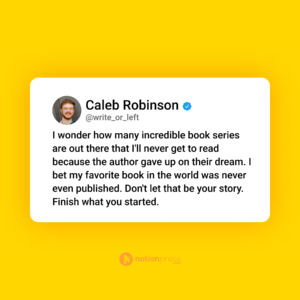
As a writer of fiction, you know you’ll know how to write a book that can incorporate the thousands of ideas stuck in your head. The urge to tell more stories never ends, even after you publish your first novel. Of all the stories you wish to tell, there is always that one story that is worth converting into a book series. From extensive research on the deep characterization, learning how to write a book series also requires immense planning and thinking. Knowing exactly how to structure the book series is the critical part, even if you have the whole series pre-planned or make it up as you release one novel after the other. Alike fiction, nonfiction books that follow intriguing threads of events also enjoy massive success as they are turned into book series.
Here’s a quick guide on how to write a book series.
Choose the right story concept
The first thing you need to ask yourself is whether your story can be stretched into multiple books. If your story cannot be stretched, don’t stretch it. A vital aspect of writing a series is identifying the right genre and themes that work well. For example, fantasy, adventure, and mythology work best, when it comes to a series. Famous best-selling series have all been from these genres. Romance, on the other hand, doesn’t work that well. Most contemporary romance writers keep their novels short and crisp because when stretched, this specific genre may not be that interesting to your audience.
When you decide on the genre for the book series, do a little research on the many novels that have used that genre. This will give you an idea as to how to start writing the story so that it can be stretched into a series. If you are working in nonfiction, it is important to choose relevant topics and those that are rooted in history to give you the scope to develop a successful series.
Decide on the plot structure
Whether you are going to write a trilogy or 20 sequels in a series, the primary objective is to decide on a plot structure and a plot outline. This way, you can define the topics covered and the themes you will explore in each volume of the series.
Also, as a first-time book series writer, it is always best to restrict your book series to a trilogy. Three is that secret number that always works; it’s neither too much nor too little. If you plan a plot structure that stretches across three books, you’ll have an easier time figuring out how you’re going to write the book. Remember, the best way to streamline your plot and create better chances for a series to materialize is to know how to format your book.
Plan it ahead
Sometimes, planning the course of a particular book in the series ahead of time can be helpful. Knowing where you are going to stop will help you construct the story well and make sure you are not stuck midway.
This does not necessarily mean that you must have the end of every scene planned ahead. For starters, divide your novel into chapters, create a rough draft of each chapter and figure out ways on how each chapter connects and builds the story.
You will ultimately understand how to finish the series. With your rough draft ready, it’s time to convert it into a complete manuscript. While readers love suspense, as it makes them curious, make sure that the suspense is not forced into your story.
Your characters are your elixir
Characters are the life and bread of a great story; they help drive your plot forward and keep the readers engaged. Especially, if you are planning to write a book series, your characters must be strong, unique, poignant, and well-defined. To achieve this, you need to give flesh and blood to your characters; give them a reason to be a part of your story.
The aspect readers love about reading is how well they could relate to the characters. If you make your characters as unique as possible, then you have a high chance of intriguing your readers. Also, learn how to make your characters consistent across books. Even if you are planning to turn a positive character negative or a negative character positive, do it seamlessly. The readers should find it realistic and not forced. When it comes to nonfiction, make sure that readers are invested in the main aspect or even leading characters of your narrative to stay hooked, give them more details about the person, and ensure that you present a picture that is both whole and interesting.
Create loose ends
Yes, when we say create loose ends, we mean it. A reader chooses to read your book’s sequel out of sheer curiosity. To build that curiosity, you need to create some valid loose ends. Things like flashbacks, prophecies, open endings, etc., work well. However, just like anything else, do not overdo it.
Also, do not leave all the loose ends as such until the very end. Try to tie the loose ends as and when possible: be it your second book in the series or the penultimate one. The horror genre is known to have nerve-wracking plots and unexpected twists and turns, so try your hand at writing a horror novel.
One of the easiest ways to grasp the concept of writing a book series is to read a few highly popular existing series. A book series also has a high chance of being picked up for conversion into a movie, giving you an extra incentive to learn how to convert your book into a movie script. Here’s our pick of the best book series
Harry Potter
Harry Potter is a series of fantasy novels written by JK Rowling. The story is about how Harry and his friends fight against Lord Voldemort, a dark wizard who intends to be immortal.
The series set numerous records and sold more than 450 million copies, making it the most-sold series in history.
Additionally, it was also translated into 73 languages and also set the record for the fastest-selling book series ever. The series was also made into movies, which were incredibly popular as well.
List of books in the series:
- Harry Potter and the Philosopher’s Stone (1997)
- Harry Potter and the Chamber of Secrets(1998)
- Harry Potter and the Prisoner of Azkaban (1999)
- Harry Potter and the Goblet of Fire (2000)
- Harry Potter and the Order of the Phoenix (2003)
- Harry Potter and the Half-Blood Prince (2005)
- Harry Potter and the Deathly Hallows (2007)
- Harry Potter and the Cursed Child (2016)
The Lord of the Rings
The Lord of the Rings is an epic fantasy series written by J R R Tolkien. It began as a sequel to his previous novel Hobit, but became a standalone series of its own. It is a highly critically acclaimed and popular book series ever written. The story revolves around the main antagonist, the Dark Lord Sauron, who created the one ring that can rule the other rings of power.
The book has references to pop culture and continues to inspire many works of art, books, and other literary work. It has sold over 150 million copies and has been reprinted plenty of times and translated into 38 languages.
List of books in the series:
- The Fellowship of the Ring
- The Two Towers
- The Return of the King
The Maze Runner
A science fiction for young adult, the series is written by James Dashner. Calling themselves Gladers, a group of teenagers transports themselves to a remote outpost. They land themselves in trouble after discovering a diabolical plot from an extremely dangerous and powerful organization named WCKD. The series has been received well and has also been made into a movie.
List of books in the series:
- The Maze Runner (2009)
- The Scorch Trials (2010)
- The Death Cure (2011)
- The Kill Order (2012)
- The Fever Code (2016)
Yuva Noah Harari’s A Brief History Series
Yuval Noah Harari’s books, Sapiens and Homo Deus explore the history and future of humanity. In Sapiens, Harari tells the story of our species from its humble beginnings to its current position as the dominant force on Earth. He reveals how we developed language, created civilizations, and came to dominate the planet. In Homo Deus, he turns his attention to the future, painting a picture of a world in which AI has surpassed human intelligence. With fascinating insights and razor-sharp wit, Harari takes us on a journey through time that is both enlightening and alarming.
List of books in the series:
- Sapiens: A Brief History of Humankind (2011)
- Homo Deus: A Brief History of Tomorrow (2015)
Ann Rule’s true crime books which provide detailed accounts of notorious criminals including The Stranger Beside Me, Green River Running Red, and the books of author Michael Lewis on financial crises such as Moneyball, Flash Boys: A Wall Street Revolt, etc comprise other examples of book series in the category of nonfiction.
As you can see, most of these book series have been written over a long period.
With concentration, perseverance, passion, and creativity, any good writer can write an amazing book series. Once you’ve created the first book, approach a reputed self-publishing agency to start promoting your work and generating buzz for the follow-ups in the series. So tell us; as an author, do you prefer writing individual novels or book series? And as a reader, which book series made you spellbound?




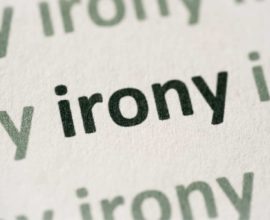


Pingback: 9 Books to curl up with on a rainy day | Publishing Blog in India()
Pingback: 11 Books to Read if you're a Harry Potter Fan | Publishing Blog in India()